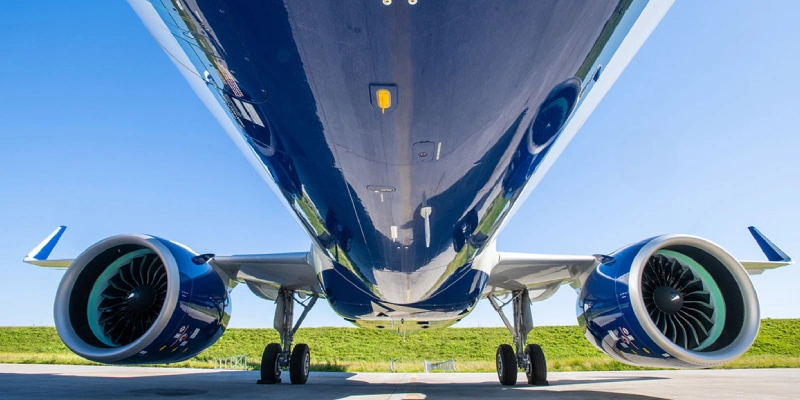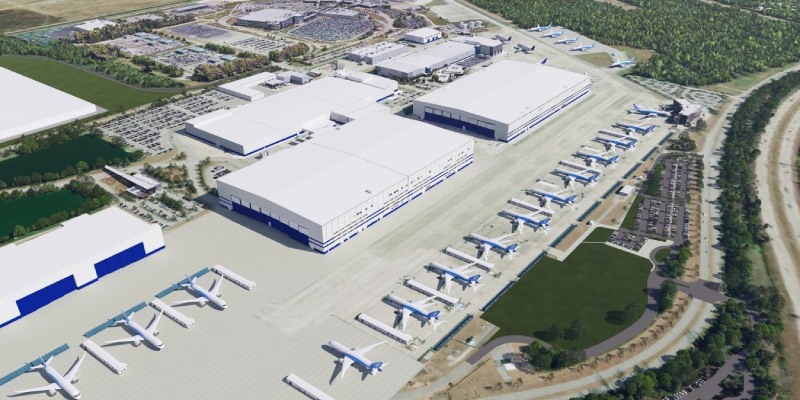At Castellón Airport, in eastern Spain, workers in protective suits enter a nearly new Airbus, removing parts as if dismembering a mechanical whale. This once semi-deserted airfield has become a graveyard for aircraft trapped by a global engine crisis.
Despite a boom in demand for aircraft, the shortage of new-generation, more fuel-efficient engines has completely upended the sector’s economics. In some cases, the engines are worth more as spare parts than the aircraft they power.
According to industry sources, this situation has led to the dismantling of more than a dozen Airbus aircraft with only a few years of service, while dozens more await their fate.
Case of the A321neo: An Aircraft Scrapped at Just Six Years Old
The phenomenon, driven by production and maintenance delays with Pratt & Whitney’s GTF engines, has marked the premature end for aircraft like the six-year-old A321neo currently being disassembled in Castellón.
At this Spanish airport, business is flourishing thanks to the British company eCube, which extracts and recycles parts from nearly new aircraft for its investor clients.
“I’ve never seen anything like it, because we’ve never had a problem of this magnitude with such a popular engine,” said Lee McConnellogue, CEO of eCube, a company that claims it can reuse or recycle practically every part of an aircraft.
Technicians remove avionics systems, landing gear, and wing sections. The engine nacelles remain on the wings, covered with blue protective sleeves, shielding units valued at up to $20 million each. These are components highly sought after by airlines that have had to ground parts of their fleets due to repair delays.
→ Safran to Open New Aircraft Engine Assembly Line for Airbus in Morocco
Metal Defect That Worsened the Crisis
The problem intensified in 2023 when Pratt & Whitney revealed a defect in the metal powder used in the manufacturing of its engines, which could cause cracks. This forced inspections of between 600 and 700 GTF engines through 2026.
Data from Cirium indicates that one-third of the Airbus fleet with GTF engines—636 aircraft—is currently grounded or in storage. In contrast, only 4% of aircraft equipped with CFM engines are out of service.
Financial Paradox: Dismantling is More Profitable Than Flying
The engine shortage has disrupted the market. Some owning companies are finding they earn more by dismantling the aircraft than by leasing them out. Engines can be leased as spare parts for about $200,000 per month each, a figure comparable to leasing an entire aircraft.
Combined with the income from selling components, the operation becomes financially attractive.
“It’s a paradox: with so much demand, how can it make sense to dismantle aircraft?” asked Austin Willis, CEO of Willis Lease, a company that has acquired several of these engines.
The topic dominated the recent meeting of the International Society of Transport Aircraft Trading (ISTAT), which brings together buyers, lessors, and financiers from the aviation sector.
“It’s a financial game… In recent years, billions of dollars in private equity have competed to acquire aircraft and engines for dismantling,” explained Richard Brown, a consultant at Naveo.
In his view, this phenomenon “demonstrates that aviation has become an extremely efficient market.”
Critical Voices: “Something is Wrong”
Not everyone shares the financial enthusiasm. Some airline leaders question how aircraft designed to fly for over 20 years and save millions of gallons of fuel can end up being dismantled after just a few years.
“This demonstrates that something is seriously wrong,” warned Willie Walsh, Director General of the International Air Transport Association (IATA), which estimates $11 billion in losses from supply disruptions this year, including $2.6 billion from engines alone.
Experts point out that the roots of the problem date back to the time when oil prices exceeded $140 per barrel, which led engine manufacturers to prioritize efficiency over durability.
“They went too fast: they achieved great improvements in efficiency, but failed on maintenance,” explained aviation economist Adam Pilarski during the ISTAT meeting.
Looking Ahead: Bottlenecks That Will Take Years
Engine executives insist that the benefits of fuel savings outweigh the maintenance delays. However, Pratt & Whitney acknowledges that normalization will take time.
Chris Calio, CEO of RTX, Pratt & Whitney’s parent company, recently stated that groundings have stabilized and will decrease, although he admitted that “there is still a lot of work to do.”
Meanwhile, some are watching the future of Airbus aircraft retired by Spirit Airlines, a US carrier facing potential bankruptcy.
“I don’t think everything is decided regarding Spirit’s fate, but it’s inevitable that some of those aircraft will end up being dismantled,” noted McConnellogue.
With information from Reuters.
Related Topics
Boeing Maintains Momentum: 53 Deliveries in October, Nearing Best Year Since 2018
Boeing Advances 777-9 Certification: Enters Third Testing Phase
Boeing Begins Expansion Work at South Carolina Plant to Increase 787 Production
Judge Approves Agreement That Exempts Boeing from Criminal Trial for 737 MAX Crashes

Plataforma Informativa de Aviación Comercial con 13 años de trayectoria.




